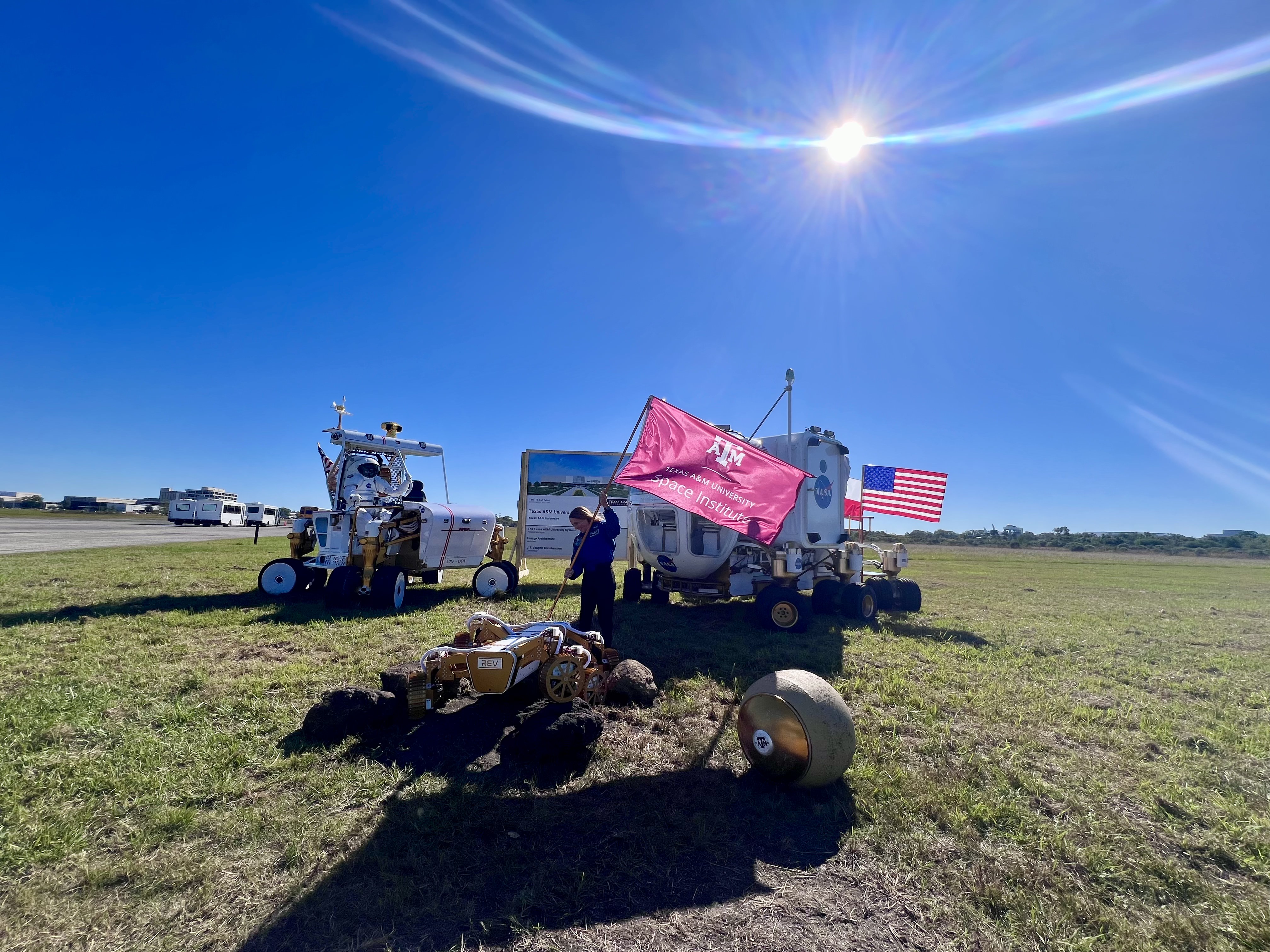Cool.
A grassy field next to NASA’s Johnson Space Center is getting an otherworldly makeover.
Officials gathered Friday to celebrate the groundbreaking of the Texas A&M University Space Institute, which will re-create the moon and Mars to help develop rovers, spacesuits and other new technologies. Construction is slated to begin in January and wrap up in October 2026.
“There are grand visions of what will happen in that facility as we enter into a really unprecedented time of exploration — actually returning humans to the moon and planning to go from the moon and then on to Mars,” said Rep. Greg Bonnen, R-Friendswood, who led the legislation that provided funding for the building.
The four-story facility will have the equivalent of two indoor football fields. One will represent the moon with slippery gray gravel, craterlike holes and a harsh light. The other will reflect Mars with a reddish sky and hard-packed terrain, plus the occasional sneaky sand trap.
A “wormhole” — or two-lane road, to be more precise — will connect the moon and Mars.
The facility is intended to be a collaborative effort. Different universities, companies and government projects will work in offices or garages that open directly to the lunar and Martian surfaces. That shared mentality has Rob Ambrose, the associate director of the institute and a professor of mechanical engineering, thinking long and hard about the color of Mars.
“We’re being very careful,” he joked. “We’re looking for some simulant material that’s somewhere between burnt orange and maroon.”
The linked story in the excerpt tells more about the purpose of this new facility, at which “companies will be able to develop spacesuits, test tools and robotics, and study actual rocks from the moon and (perhaps one day) Mars”. The A&M press release says that the facility “will support training for missions, including simulated landings on the moon and Mars, as well as advanced research and development in aeronautics, robotics, and other fields”, and “will be vital for partnerships, both research and commercial, that help Texas businesses as well as NASA stay at the forefront of the final frontier”. One part research, one part incubator, I suppose. You’ll still have to go elsewhere to simulate being on Mars, but NASA is big enough to handle it. Anyway, I look forward to seeing what this new facility can do.

